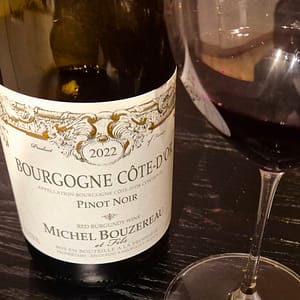I am not among the ranks of those who follow Bourgogne closely. One reason is that I do my best to keep up with what happens other places, such as the Iberian Peninsula. I could also mention the prices. But then, Bourgogne Côte-d’Or has emerged as an exciting category for wine lovers seeking high-quality wines at more accessible prices than the prestigious appellations. What is more, the director of my local wine shop is a highly regarded expert on Bourgogne. So at a major release of Burgundies, from DRC and downwards, he said that this was a must try.
I have learned that Bouzereau is based in Meursault, where he makes elegant white wines from that appellation. The estate is now run by Michel’s son, Jean-Baptiste Bouzereau. He follows organic practices in the vineyard and employs a gentle winemaking approach to preserve the finesse of the fruit. Bouzereau employs a restrained use of new oak to preserve the wine’s elegance.
The grapes for this wine come from selected plots in the Côte de Beaune. The 2022 vintage was warm, yet retained enough freshness to ensure balance in the wines. The grapes are hand-harvested, partly destemmed and fermented with indigenous yeasts in open-top vats. This cuvée saw one year in barrel, 15% new.

Bourgogne Côte-d’Or Pinot Noir 2022 (Michel Bouzereau)
Bright ruby with hints of violet. Aroma of red berries (cherry, raspberry), floral notes and subtle spice. Fresh and delicate in the mouth, with vibrant red fruit, balanced acidity, fine-grained tannins, with a gentle earthiness. A refined, terroir-driven pinot noir with purity of fruit and silky tannins. Beautiful already, but will evolve over the next few years.
Price: Medium
Food: Light meat (veal), roasted duck breast, or a classic wild mushroom risotto
Leave a Comment











